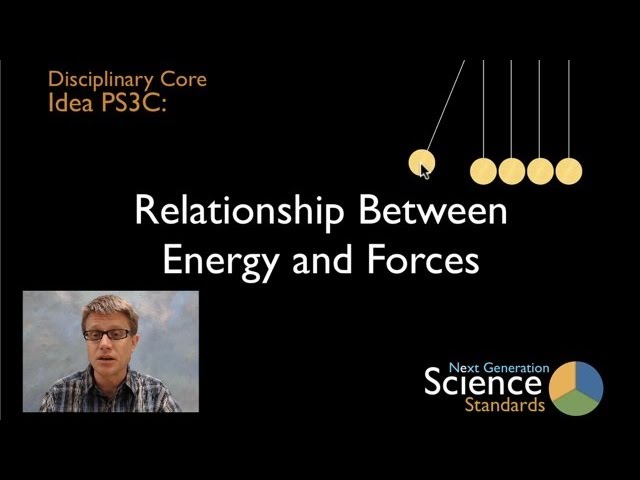PS3.C: Relationship Between Energy and Forces
How are forces related to energy?
K-12 Progressions
| K-2 | 3-5 | 6-8 | 9-12 |
|---|---|---|---|
| Bigger pushes and pulls cause bigger changes in an object’s motion or shape. | When objects collide, contact forces transfer energy so as to change the objects’ motions. | When two objects interact, each one exerts a force on the other, and these forces can transfer energy between them. | Fields contain energy that depends on the arrangement of the objects in the field. |
Grade Band Endpoints for PS3.C
from A Framework for K-12 Science Education: Practices, Crosscutting Concepts, and Core Ideas (pages 127)
By the end of grade 2. A bigger push or pull makes things go faster. Faster speeds during a collision can cause a bigger change in shape of the colliding objects.
By the end of grade 5. When objects collide, the contact forces transfer energy so as to change the objects’ motions. Magnets can exert forces on other magnets or on magnetizable materials, causing energy transfer between them (e.g., leading to changes in motion) even when the objects are not touching.
By the end of grade 8. When two objects interact, each one exerts a force on the other that can cause energy to be transferred to or from the object. For example, when energy is transferred to an Earth-object system as an object is raised, the gravitational field energy of the system increases. This energy is released as the object falls; the mechanism of this release is the gravitational force. Likewise, two magnetic and electrically charged objects interacting at a distance exert forces on each other that can transfer energy between the interacting objects.
By the end of grade 12. Force fields (gravitational, electric, and magnetic) contain energy and can transmit energy across space from one object to another.
When two objects interacting through a force field change relative position, the energy stored in the force field is changed. Each force between the two interacting objects acts in the direction such that motion in that direction would reduce the energy in the force field between the objects. However, prior motion and other forces also affect the actual direction of motion.
Introduction to PS3.C
When two objects interact, each one exerts a force on the other. These forces can transfer energy between the objects. Forces between two objects at a distance are explained by force fields (gravitational, electric, or magnetic) between them. Contact forces between colliding objects can be modeled at the microscopic level as due to electromagnetic force fields between the surface particles. When two objects interacting via a force field change their relative position, the energy in the force field between them changes. For any such pair of objects the force on each object acts in the direction such that motion of that object in that direction would reduce the energy in the force field between the two objects. However, prior motion and other forces also affect the actual direction of motion.
Patterns of motion, such as a weight bobbing on a spring or a swinging pendulum, can be understood in terms of forces at each instant or in terms of transformation of energy between the motion and one or more forms of stored energy. Elastic collisions between two objects can be modeled at the macroscopic scale using conservation of energy without having to examine the detailed microscopic forces.
Performance Expectations Associated with PS3.C
VIDEOS
Next Generation Science Standards is a registered trademark of Achieve. Neither Achieve nor the lead states and partners that developed the Next Generation Science Standards were involved in the production of this product, and do not endorse it. Visit the official NGSS website.


